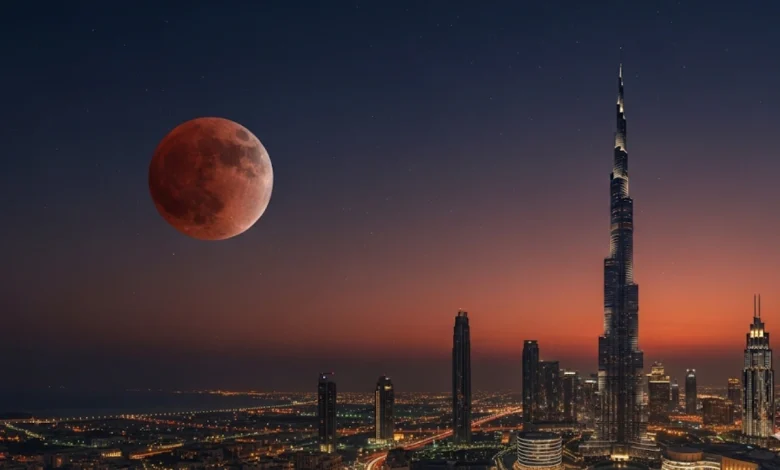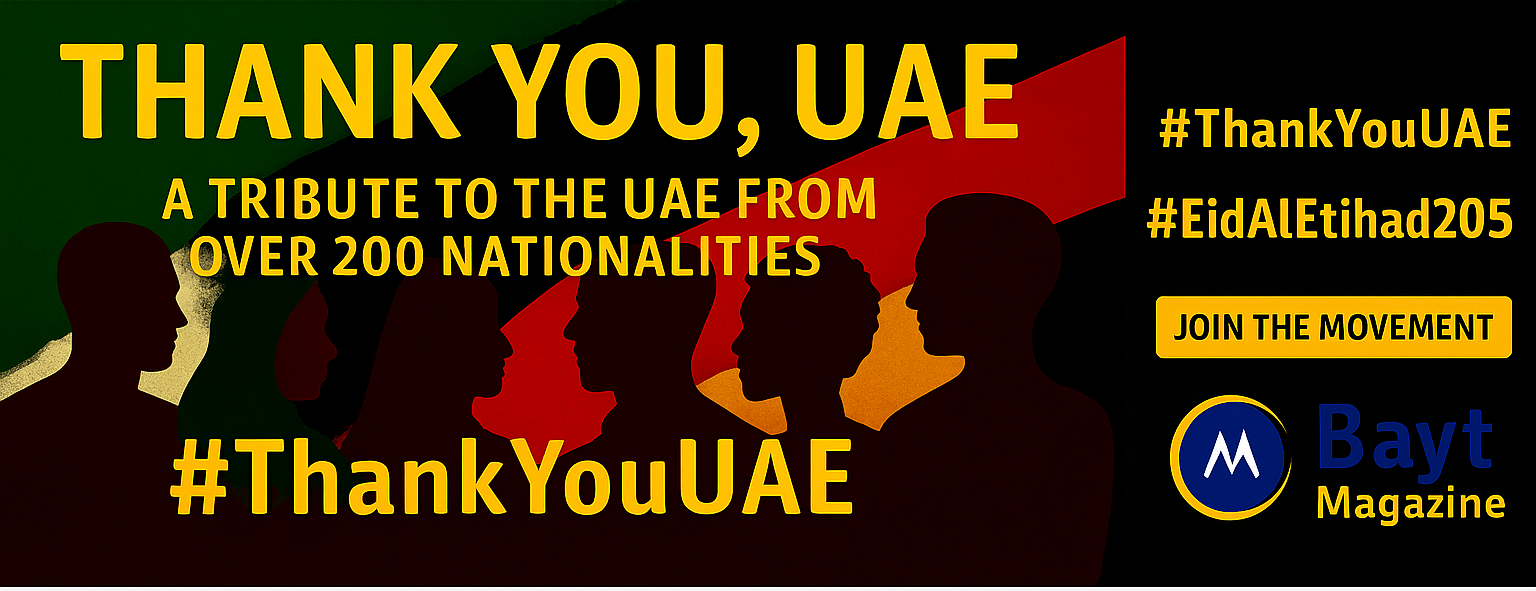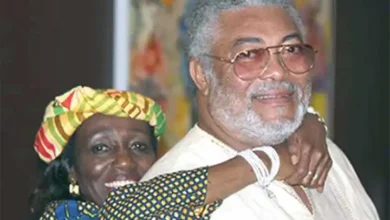
Blood Moon Creates Celestial Magic Across UAE Skies
The UAE skies transformed into a breathtaking celestial display during a rare total lunar eclipse as the Blood Moon amazed stargazers. This magnificent event fascinated viewers across the Emirates with its stunning copper-red glow. About 87% of the world’s population could witness this extraordinary sight. UAE residents will have to wait until December 31, 2028 to see it again.
Dubai’s full moon showed off its crimson hues as sky watchers gathered for one of the longest total lunar eclipses in recent years. The spectacular show lasted 82 minutes in full eclipse mode, and reached its peak at 10:12 pm before continuing until 10:53 pm. Emirates residents enjoyed various phases of the eclipse for almost five and a half hours. The most important indicator of public excitement came from the Dubai Astronomy Group’s flagship gathering at Mohammed Bin Rashid Library, where 250 participants registered to witness this rare astronomical phenomenon.
Blood Moon turns UAE skies crimson during rare eclipse
“While the complete cycle is still ongoing, I wanted to post this quick timelapse of the full lunar eclipse crossing the tallest building in the world.” — Rami Dibo, Dubai-based photographer known for celestial and cityscape imagery
The rare celestial show lit up UAE skies as the Moon entered Earth’s faint outer shadow at 7:28 pm on September 7. This marked the start of an amazing five-hour astronomical display. People from Dubai to Abu Dhabi watched the familiar silver orb slowly turn into a deep crimson sphere.
Moon enters penumbra at 7:28 pm
The eclipse started with a subtle penumbral phase at 7:28 pm as the Moon moved into Earth’s outer, lighter shadow. Most observers could barely see this original stage with their naked eyes. The penumbral phase gently set the stage for the dramatic show that followed.
The partial eclipse began at 8:27 pm when the Moon moved into the umbra—Earth’s darkest shadow. A visible “bite” appeared on the lunar surface and created a darker effect that engaged skywatchers across the Emirates. The Moon’s position, about 77 degrees above the southeastern horizon, gave everyone a perfect view.
Totality begins at 9:30 pm and peaks at 10:12 pm
The Moon became fully immersed in Earth’s umbra by 9:30 pm. This started the totality phase and brought out the Blood Moon phenomenon. The lunar surface showed beautiful coppery-red hues as Earth’s atmosphere filtered sunlight. Rayleigh scattering explains these remarkable colors by filtering out blue wavelengths while letting red and orange light reach the lunar surface.
The eclipse peaked at 10:12 pm during its maximum phase. The Moon expressed its deepest crimson colors and glowed with different shades of red and copper in the night sky. The totality phase lasted 82 minutes, making it one of the longest total lunar eclipses in recent years. Photographers and observers had plenty of time to enjoy the spectacle.
Eclipse ends after midnight with penumbral phase
The Moon slowly emerged from Earth’s shadow after the peak show. The total eclipse ended at 10:53 pm as the Moon started leaving the umbra. The partial eclipse continued until 11:56 pm, and the visible “bite” gradually faded as the Moon moved away from Earth’s core shadow.
The eclipse finally ended when the penumbral phase finished at 12:55 am on Monday, September 8. This rare five-hour celestial event that changed UAE skies was complete. The eclipse’s magnitude of 1.36 showed that Earth’s umbral shadow fully covered the Moon during maximum eclipse.
People in Asia, Eastern Africa, Australia, and most parts of Europe enjoyed this celestial show. Those in central and western parts of South America missed the totality phase. UAE residents were lucky to see this complete astronomical event that won’t be visible in local skies until December 31, 2028.
Astronomy groups host public viewings across the Emirates
Image Source: Gulf News
Sky watchers across the UAE gathered at viewing events to see the Blood Moon light up the night sky. Local astronomy organizations set up special gatherings with telescopes, expert guidance, and educational activities to boost the public’s experience of this rare celestial event.
Dubai Astronomy Group gathers at Mohammed Bin Rashid Library
The Dubai Astronomy Group (DAG), 23 years old, promotes astronomical studies in the Middle East region and hosted its main viewing event at the Mohammed Bin Rashid Library. The waterfront area opposite Dubai Festival City was perfect to watch the lunar eclipse. DAG had 250 registered participants, plus more people who signed up at the venue.
The night kicked off at 7:15 PM with welcome remarks. Visitors took part in several activities including an educational talk about lunar eclipses at 7:45 PM. At 8:00 PM, experts showed techniques to capture the eclipse during a live astrophotography workshop. Astronomy experts answered questions at 8:20 PM before everyone moved to telescope observations at 8:40 PM.
The venue had bean bags and telescopes spread out to make sky-gazers comfortable. “This is the perfect spot to catch the total lunar eclipse,” said Khadijah Hasan Ahmed, DAG’s Operations Manager. Adult tickets cost AED 250 while children under 13 paid AED 200.
Sharjah Academy opens telescopes to the public
The Sharjah Academy for Astronomy, Space Sciences and Technology (SAASST) at the University of Sharjah welcomed residents to watch the Total Lunar Eclipse. People stayed until 12:30 AM to see different phases of the eclipse.
SAASST’s Sharjah Optical Observatory helps students and the public learn about astronomy through special activities. The Academy lets people use telescopes on specific nights each month with help from astronomers. They also show major astronomical events like lunar and solar eclipses on screens in their halls.
Livestreams and global participation enhance reach
DAG started a big livestream at 7:15 PM for people who couldn’t come in person. They worked with partners across six continents to show the eclipse worldwide.
The broadcast included Al Sadeem Astronomy from Abu Dhabi and international partners: Perth Observatory (Australia), Bahrain Stargazers, Space India, Lahore Astronomical Society (Pakistan), Astro Barcelona in Spain, and Egyptian Society for Astronomy.
DAG teamed up with famous photographer Rami Dibo to capture a special shot of the eclipse with the Burj Khalifa. “Our goal with this livestream is to showcase the people behind the telescopes, from professional astronomers to dedicated enthusiasts, and to unite viewers around the world under one sky,” DAG representatives said.
They called the September 7 eclipse “one of the most photogenic eclipses of the decade.” The Moon’s red glow comes from sunlight bending through Earth’s atmosphere, which filters blue light but lets red and orange tones reach the lunar surface.
Skywatchers share awe and emotion under the red moon
Image Source: The National News
The Blood Moon put on a spectacular show as people all over the UAE watched it change the night sky. Everyone from newcomers to experienced stargazers stood amazed at the red glow of the moon above.
First-time viewers describe the experience as magical
Many UAE residents got their first look through professional astronomy equipment during the lunar eclipse. Fatma Nasser, a 14-year-old watching her first eclipse, found herself drawn into the celestial display. “It was really interesting to see the Moon turn red,” she remarked. “It’s my first time seeing a lunar eclipse through a telescope and I really enjoyed it. I wasn’t so interested in astronomy before but after today’s event I think I might start coming to more of these so I can see the Moon and planets up close”.
Dubai resident Virasath Khan, a regional sales manager, came to his first astronomy event and called it life-changing. “There were multiple telescopes giving us clear views and experts explaining everything. I am just a stargazer, and this was my first experience. I enjoyed every moment. The views I saw and the pictures I took were truly astonishing”. The Indian expat has lived in Dubai for eight years and said viewing the eclipse through professional equipment gave “a completely different feeling”.
Families and children inspired by the celestial event
The Blood Moon gave families throughout the Emirates a great chance to learn together. Dubai mom Llama Bata brought her sons Zeyad, 14, and Omar, 10, to see this rare sight. “It’s the first time we’ve watched the eclipse properly through a telescope and I think they got very excited to see it because we know that it’s a very rare occasion,” she explained. Her eldest son’s interest in astronomy helped them find out about the event through his school.
Quotes from attendees reflect wonder and curiosity
South African hotel manager Melissa Cunliffe called the Blood Moon “like a little chocolate chip in the sky”. She came to her first Dubai Astronomy Group event and watched the Moon change from white to deep brown, then bright red through telescopes. “I’ve been following DAG for a while, so I was thrilled to join. Experts explained the astronomical and historical aspects, making it even more fascinating. It’s powerful seeing the Moon, Sun, and Earth align like this”.
Young people in the UAE have shown growing enthusiasm over the last several years. Khadijah Ahmed, Dubai Astronomy Group’s operations manager, saw interest spike after His Highness Sheik Mohammed announced plans for Mars exploration in 2017. “The interest has been explosive ever since from everybody, not just in the UAE, I would say internationally”. Sunday’s eclipse event showed this growing appeal as more than 30 countries joined the group’s live-stream on YouTube.
Why does the Moon appear red during a total eclipse?
Image Source: SciTechDaily
The Emirates skywatchers found themselves engaged by a striking crimson hue that resulted from light and physics working together. A lunar eclipse happens when Earth casts its shadow on the lunar surface, unlike a solar eclipse where the Moon blocks sunlight.
Rayleigh scattering filters blue light
Rayleigh scattering, a physical phenomenon, creates the blood-red appearance. This process makes shorter wavelength blue light scatter more easily as it interacts with Earth’s atmosphere’s particles. Red light with longer wavelengths travels more directly through space. British Nobel laureate Lord Rayleigh first explained this phenomenon in the 19th century. This same mechanism gives us blue skies during daytime and paints our sunsets with vibrant colors.
Earth’s atmosphere bends red light onto the Moon
Earth’s atmosphere works like a prism by bending and refracting sunlight during totality. Red-orange wavelengths are the only ones that can make their way around our planet’s edge. These filtered rays then paint the lunar surface. Our atmosphere redirects this filtered sunlight, which explains why the Moon never goes completely dark even in Earth’s shadow.
Umbra and penumbra explained with visual effects
Eclipses create two distinct shadows: the umbra and penumbra. The darkest central shadow, called the umbra, blocks direct sunlight completely. The penumbra creates a lighter outer shadow where sunlight dims partially. The Moon’s red coloration appears specifically when it travels entirely through the umbra.
Cultural and spiritual practices mark the lunar eclipse

Image Source: Instagram
The UAE skies witnessed a celestial spectacle that prompted communities to embrace their spiritual practices and cultural traditions. These customs stem from their deep connection with astronomical events.
Muslims perform Salat Al Khusuf during eclipse
Quranic verses resonated from mosques across the Emirates as Muslims gathered to perform Salat Al Khusuf, a special two-rakʿah prayer reserved for lunar eclipses. The General Authority of Islamic Affairs confirmed the prayer’s timing for September 7, and worshippers filled mosques in major cities. Religious leaders emphasized that prayers, charitable acts, and Allah’s remembrance would continue until the eclipse ended. Islamic tradition encourages believers to welcome these moments with prayer rather than fear. This practice helps them reflect on life’s temporary nature and Allah’s creation.
Traditional beliefs and myths around lunar events
Lunar eclipses spark different reactions in various cultures. Hindu families typically stay indoors and avoid cooking or using sharp objects. The Batammaliba people of West Africa see the Blood Moon as a symbolic battle between sun and moon. They use this time to resolve their community conflicts. Ancient civilizations created fascinating stories to explain the Moon’s darkening. Chinese folklore speaks of dragons while Incan tales tell of jaguars that devour the Moon.
Science debunks superstitions with facts
Scientific evidence contradicts many eclipse-related myths. People often believe that lunar eclipses can harm unborn babies, spoil food, or trigger natural disasters. Scientists have found no proof linking eclipses to pregnancy issues or food contamination. Unlike their solar counterparts, lunar eclipses are safe to watch without any eye protection.
The Blood Moon eclipse turned UAE’s skies into an amazing celestial show on September 7. People by thousands gathered under the night sky all over the Emirates. They watched their familiar moon slowly change into a glowing red orb. This rare sky event, which 87% of the world could see, created moments of wonder that everyone shared.
The event brought science and spirituality together beautifully. People looked through telescopes at hosted viewings while mosques filled up with worshippers doing Salat Al Khusuf. This showed how sky events still inspire both scientific curiosity and spiritual connection in different cultures.
First-timers couldn’t believe their eyes. Young space fans like Fatma Nasser found new interests, and families used this chance to get their kids excited about space. Dubai Astronomy Group’s programs helped people learn more, teaching them how Earth’s atmosphere makes the moon look red.
The way people came together to celebrate this sky event made it special. Astronomy groups from six continents shared live streams that connected viewers worldwide through their love of the night sky. Local photographers took amazing pictures that showed natural wonder alongside UAE landmarks, leaving lasting memories of this special night.
UAE residents will have to wait until December 31, 2028, to see another total lunar eclipse in their skies. The memories and knowledge from this Blood Moon will stay with people for years to come. On top of that, more young people in UAE are getting interested in astronomy, which points to a bright future for space science here. This amazing sky event reminded everyone who looked up about the incredible beauty that unfolds above us.




